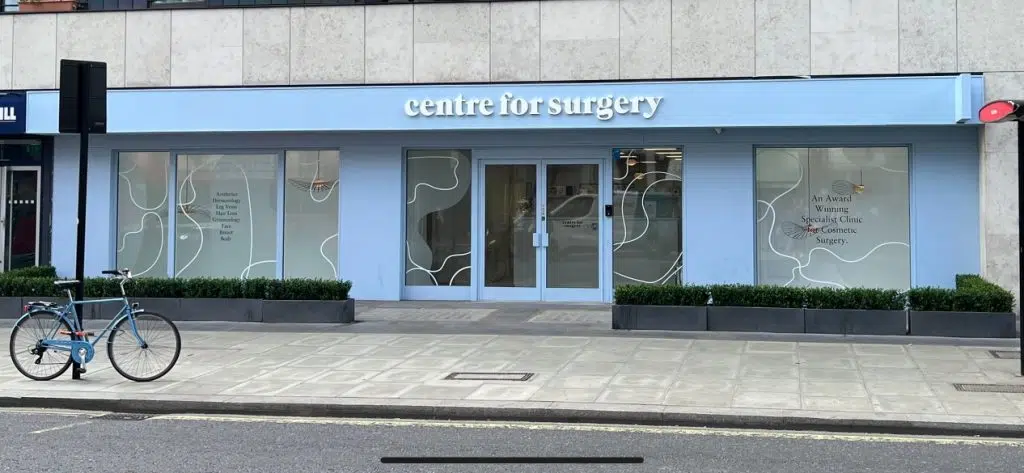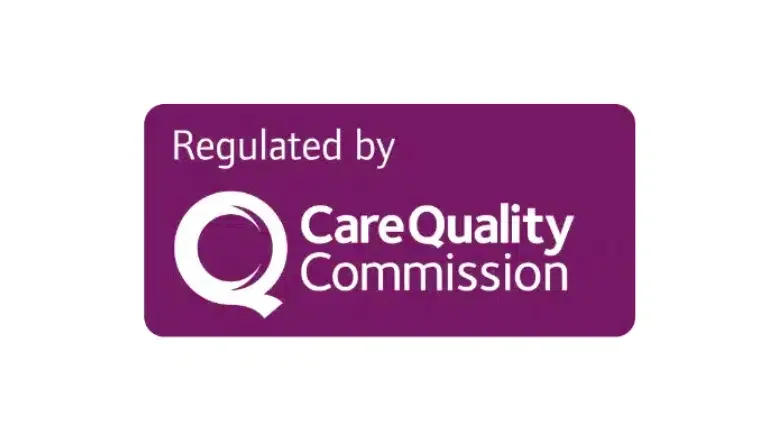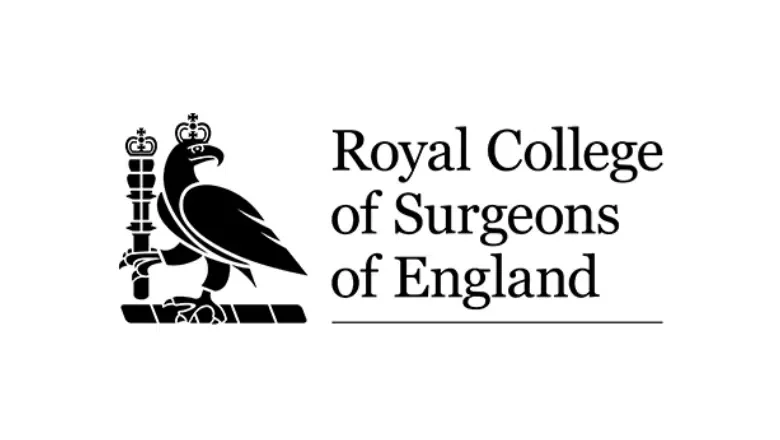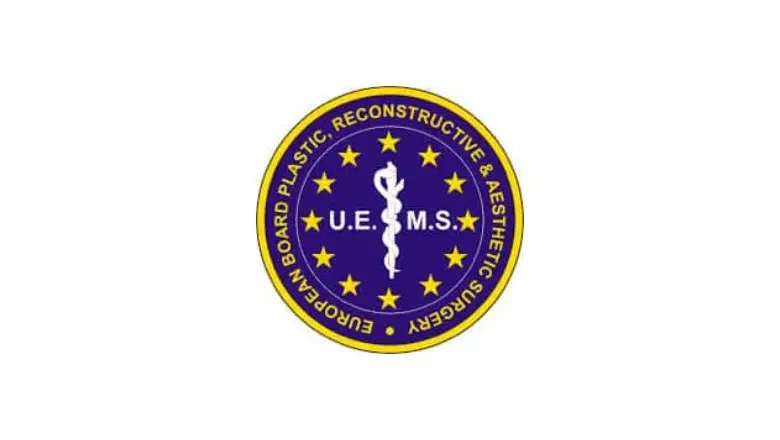Areola Reduction Surgery in London
Feel confident and comfortable in your own skin with areola reduction – a personalized procedure designed to reduce the size and improve the symmetry of the areolas for a more balanced and proportionate look.
Areola reduction surgery, also known as areolar reduction, is a cosmetic procedure designed to address enlarged or irregularly shaped areolas, which can occur due to factors such as genetics, weight fluctuations, pregnancy, or breastfeeding. Enlarged areolas can cause discomfort, self-consciousness, and dissatisfaction with the appearance of the breasts. Areola reduction surgery aims to create a more balanced and proportionate look by resizing and reshaping the areolas to better suit the overall breast size and shape.
The areola is the pigmented skin surrounding the nipple, and its size and shape can vary greatly from person to person. In some cases, enlarged or irregular areolas can cause the breasts to appear disproportionate or asymmetrical. Areola reduction surgery can be performed as a standalone procedure or in combination with other breast procedures, such as breast augmentation, breast lift, or breast reduction, to enhance the overall appearance and symmetry of the breasts.
Areola reduction surgery is suitable for both men and women who are unhappy with the size, shape, or appearance of their areolas. Ideal candidates for this procedure are individuals in good overall health, with realistic expectations about the outcome of the surgery. It’s important to note that this procedure focuses on the areolas only and does not address other concerns related to breast size or shape. However, when combined with other breast procedures, areola reduction can contribute to a more aesthetically pleasing and harmonious breast appearance.
Before undergoing areola reduction surgery, we would recommend having an in-depth consultation with a specialist plastic surgeon at Centre for Surgery to discuss your concerns, expectations, and desired outcomes. Your surgeon will assess your breasts, review your medical history, and determine whether you are a suitable candidate for the procedure. They will also explain the surgical process, potential risks, and recovery process in detail, allowing you to make an informed decision about your treatment plan.
What Is an Areola?
The areola is the circular area of pigmented skin that encircles the nipple. It’s a universal feature found in all individuals, irrespective of gender, the quantity of breast tissue, or age. However, areolas are unique to each person, with noticeable variations in size, shape, symmetry, and colour. This diversity is part of what makes each individual’s body distinct and characteristic.
What Factors Affect the Size and Shape of Areolas?
Several factors can cause changes in the size and shape of your areolas over time. These include:
Changes in Breast Size
Any alteration in the overall size of the breasts, whether due to natural growth, hormonal changes, or cosmetic procedures, can impact the size and shape of the areolas.
Pregnancy and Breastfeeding
These are significant events that can lead to changes in the breasts and areolas. During pregnancy and while breastfeeding, the areolas often become larger and darker, a natural response to the body’s preparation for nursing.
Significant Weight Loss
Losing a considerable amount of weight can affect the size and shape of the breasts, and consequently, the areolas may also change in appearance.
Age-Related Changes
As you age, skin elasticity tends to decrease, which can lead to changes in the appearance of the areolas. They might stretch or sag along with the rest of the breast tissue.
What Causes Large Areolas?
The size and shape of the areolas can vary greatly between individuals and can change due to various factors such as age, hormonal changes, and pregnancy. Here are some of the common causes of large areolas:
Genetics
The size and shape of the areolas are determined by genetics, and some people may inherit larger areolas from their parents.
Hormonal changes
Hormonal changes during puberty, pregnancy, and breastfeeding can cause the areolas to enlarge due to the increase in estrogen and progesterone levels.
Ageing
As a person ages, the skin naturally loses elasticity and may cause the areolas to stretch and appear larger.
Weight gain
Significant weight gain can cause the breasts to enlarge, which can result in larger areolas.
Breastfeeding
During breastfeeding, the areolas may become larger due to the stimulation and stretching of the breast tissue.
Breast surgery
Some breast surgeries, such as breast augmentation or breast lift, can cause changes in the size and shape of the areolas.
While large areolas are usually not a medical concern, some people may feel self-conscious about their appearance or experience discomfort when wearing tight-fitting clothing. In such cases, areola reduction surgery may be an option to consider.
What is Areola Reduction Surgery?
Areola reduction surgery is a cosmetic procedure that helps people feel more confident and comfortable with the appearance of their breasts. This surgery focuses on resizing and reshaping the areolas, which are the darker, circular areas of skin surrounding the nipples. Some people might feel that their areolas are too large or irregularly shaped, making their breasts look unbalanced or asymmetrical. That’s where areola reduction comes in, offering a solution to create a more harmonious and aesthetically pleasing look.

Both men and women can benefit from areola reduction surgery if they’re unhappy with the size or shape of their areolas. It’s important to keep in mind that this procedure is all about the areolas and doesn’t change the overall size or shape of the breasts. However, it can be combined with other breast procedures, like breast augmentation or breast reduction, for a more comprehensive transformation.
Before going ahead with areola reduction surgery, you will speak with a plastic surgeon at Centre for Surgery to make sure you’re a good fit for the procedure. They’ll want to know about your health, your expectations, and what you hope to achieve through surgery. Once they’ve got all the information they need, they’ll work with you to create a personalised treatment plan that addresses your concerns and helps you feel great about your appearance.
Areola Reduction Surgery Before & After Photos
Benefits of Areola Correction Surgery
Areola reduction, also known as areola resizing or reduction mammoplasty, is a cosmetic surgical procedure that reduces the size of the areola, the pigmented skin surrounding the nipple. The procedure can improve the appearance of the breast and boost a person’s self-confidence.
Here are some of the potential benefits of areola reduction:
Aesthetic improvement
Areola reduction can improve the symmetry and proportion of the breast, creating a more aesthetically pleasing appearance. This can be especially helpful for people who are self-conscious about the size or shape of their areolas.
Improved comfort
Large areolas can be uncomfortable, particularly in tight clothing or during physical activity. Areola reduction can help reduce discomfort and increase confidence in physical activity.
Enhanced self-esteem
Many people who undergo areola reduction report improved self-esteem and confidence following the procedure. This can be due to the improved appearance of the breast, as well as the satisfaction of having addressed a physical issue that has caused them discomfort or embarrassment.
Improved breastfeeding
In some cases, large areolas can make breastfeeding more difficult. Areola reduction can improve the ability to breastfeed by reducing the size of the areola and improving nipple placement.
Ideal Candidates for Areola Correction
Ideal candidates for areola reduction surgery are individuals who are unhappy with the size, shape, or appearance of their areolas and wish to achieve a more aesthetically pleasing and proportionate look. However, there are certain factors that make someone an ideal candidate for this procedure. These factors include:
Good overall health
To undergo any surgery, including areola reduction, it is essential to be in good general health. This means having no uncontrolled medical conditions, such as diabetes or heart disease, which could increase the risk of complications during or after surgery.
Non-smoker
Smoking can impair the healing process and increase the risk of complications. If you’re a smoker, you’ll need to quit smoking for a specified period before and after the surgery, as advised by your surgeon.
Stable weight
Significant fluctuations in weight can affect the size and shape of the breasts and areolas. It’s best to be at a stable weight before undergoing areola reduction surgery to ensure long-lasting results.
Realistic expectations
It’s crucial to have a clear understanding of what the surgery can and cannot achieve. While areola reduction can improve the appearance of your areolas, it won’t address other aspects of your breasts, such as size or sagging. Your surgeon will discuss your desired outcomes and help you set realistic expectations for the procedure.
Completed family planning
If you plan to have children in the future and breastfeed, it’s worth considering that areola reduction surgery may affect your ability to do so. While many women can still breastfeed after the procedure, there’s no guarantee. It may be best to wait until you’ve completed your family before undergoing the surgery.
Emotional readiness
Undergoing any cosmetic procedure can be an emotional experience. It’s essential to be emotionally stable and prepared for the changes in your appearance, as well as the recovery process.
Can I Have Areola Reduction Surgery on One Areola?
Undergoing areola reduction surgery on just one areola is indeed a feasible option. This procedure is often considered by individuals who find that one of their areolas is noticeably larger or differently shaped compared to the other, leading to an uneven look in the breast area. If this asymmetry causes you discomfort or dissatisfaction, opting for areola reduction can be a beneficial choice.
In cases where both areolas present issues in terms of size or shape, surgeons might typically recommend addressing both, even if the concerns are more pronounced in one. However, if the concern is isolated to just one areola, it’s possible to focus the surgical procedure solely on that area. By doing so, the surgeon aims to adjust the size and shape of the problematic areola to better match its counterpart, thus achieving a more balanced and symmetrical appearance.
Opting for a single areola reduction can be an appealing choice, especially for those wishing to minimise surgical intervention. It allows for a targeted approach, correcting the specific asymmetry without the need to operate on both areolas.
Can Areola Reduction Surgery Address Puffy Areolas?
Areola reduction surgery is indeed an effective method to tackle the issue of puffy areolas, a condition often described as “puffy nipples“. This cosmetic concern arises when breast tissue pushes the areolas and nipples outward, giving them a pronounced or raised look. The good news is that areola reduction surgery can significantly diminish this puffy appearance, often without necessitating additional procedures like a breast lift.
This condition is commonly observed in individuals with tuberous-shaped breasts. Characterised by a narrow base and a high breast crease, tuberous breasts tend to have a lengthened or tube-like shape. Recognising tuberous breasts can be straightforward. Signs include unevenly developed breasts, an appearance suggesting incomplete development, puffiness in the areolas, downward-pointing nipples, a drooping look, or a triangular or tube-like shape of the breasts.
RELATED: How to Fix Tuberous Breasts
If you’re experiencing both tuberous breasts and puffy areolas, a consultation with a surgeon at Centre for Surgery in London could provide clarity on whether areola reduction surgery alone will meet your aesthetic goals. For many patients with tuberous breasts, a combination of areola reduction and breast augmentation can address a range of cosmetic concerns, enhance self-confidence, and achieve a more fully developed breast appearance. Each case is unique, and a personalised consultation is essential to determine the most suitable approach for your specific needs.
RELATED: Tuberous Breast Correction
Areola Reduction Techniques
Areola reduction surgery can be performed using different techniques, depending on the individual’s needs and the surgeon’s expertise. Below, we detail some common techniques used for areola reduction surgery:
Circular Incision Technique
Also known as the “doughnut” technique, this method involves making a circular incision around the areola’s edge. The surgeon removes a doughnut-shaped section of tissue from the outer edge of the areola and then sutures the remaining tissue together. This technique reduces the areola’s size while maintaining its natural circular shape.
Periareolar Incision Technique
In this method, the surgeon makes an incision around the outer edge of the areola and then another incision parallel to the first, a few millimetres away, creating a thin strip of skin. The surgeon removes this strip of skin and sutures the two edges together, tightening the surrounding tissue and reducing the areola’s size.
Crescent Incision Technique
The crescent incision technique involves removing a crescent-shaped section of tissue from the top or bottom of the areola. The surgeon then sutures the remaining tissue together, pulling the areola upward or downward to reduce its size. This technique can also help address mild sagging in the breasts.
Lollipop Incision Technique
This technique is often combined with a breast lift and involves making an incision around the areola and then vertically down the breast to create a lollipop shape. The surgeon removes excess skin and tissue, reshapes the areola, and lifts the breast to achieve a more youthful and lifted appearance.
Free Nipple Graft Technique
In cases where significant areola reduction is needed, the surgeon may use the free nipple graft technique. This method involves completely detaching the nipple and areola from the breast, resizing and reshaping it, and then reattaching it to the breast in the desired position. This technique carries a higher risk of complications and may affect nipple sensation and breastfeeding ability.
Each of these areola reduction surgical techniques has its advantages and drawbacks. The choice of technique will depend on the patient’s anatomy, desired outcome, and the surgeon’s experience and preference. During your consultation at Centre for Surgery, our surgeons will assess your needs and recommend the most appropriate technique to achieve the best possible results.
Areola Reduction Surgery Procedure
The specific steps of an areola reduction surgery may vary depending on the technique used, but generally, the procedure can be broken down into the following steps:
Anaesthesia
Areola reduction surgery is typically performed under local anaesthesia with sedation or general anaesthesia, depending on the patient’s preference and the surgeon’s recommendation. This ensures that you remain comfortable and pain-free during the procedure.
Incisions
The surgeon will create incisions around the areola, following the specific technique chosen during the consultation. These incisions may be circular, periareolar, crescent-shaped, or lollipop-shaped, depending on the technique used.
Reshaping the areola
Excess tissue is removed, and the areola is reshaped to achieve the desired size and appearance. This may involve removing a portion of the areola’s outer edge, removing a strip of skin around the areola, or even detaching and resizing the areola before reattaching it to the breast.
Closing the incisions
Once the areola has been reshaped, the surgeon will carefully suture the incisions. They may use dissolvable sutures, which the body will absorb over time, or non-dissolvable sutures, which will need to be removed during a follow-up appointment.
Dressing and compression
The surgeon will apply a sterile dressing to protect the incisions and may also use a compression garment or bandage to help minimise swelling and support the breasts during the initial stages of recovery.
Recovery after Areola Reduction: What to Expect
Recovery after areola reduction surgery typically takes several weeks and involves several stages.
Here is a detailed guide to recovery after areola reduction:
Immediately after surgery:
- You will be taken to the recovery room to be monitored for several hours.
- You will have bandages over the surgical site, and a compression garment will be applied to minimize swelling.
- You may feel groggy from anesthesia, and experience some pain or discomfort.
The first week after surgery:
- You will need to rest and limit your physical activity.
- You will need to take pain medication as prescribed by your surgeon.
- You may experience some swelling, bruising, and discomfort, which is normal.
- You will need to wear a compression garment 24/7 for the first week to help reduce swelling.
- You will need to avoid taking a shower, and only take a sponge bath.
- You will need to avoid lifting anything heavier than 10 pounds.
The second week after surgery:
- You may be able to resume some light activity, but you still need to avoid heavy lifting.
- You may still experience some swelling and discomfort.
- You may be able to take a shower, but only with lukewarm water and mild soap.
- You may be able to stop wearing the compression garment, but check with your surgeon first.
The third and fourth weeks after surgery:
- You may be able to gradually increase your activity level, but still need to avoid heavy lifting and strenuous exercise.
- You may still experience some swelling, but it should continue to improve.
- You should continue to monitor your incisions for any signs of infection or other complications.
- You can gradually return to your normal routine, but avoid anything that may cause trauma to the surgical site.
After four weeks:
- Most patients are fully recovered after four weeks, but it can take up to six weeks to fully recover.
- You can resume all normal activities, including exercise and lifting heavy objects.
- You should continue to monitor your incisions and follow-up with your surgeon as instructed.
Potential Risks of Areola Reduction
Areola reduction is a commonly performed procedure at Centre for Surgery in London. At your consultation, your surgeon will discuss in depth the potential risks and complications associated with areola surgery. You can minimise the risk of complications by choosing an experienced surgeon at Centre for Surgery.
- Anaesthetic risks
- Postoperative haemorrhage
- Hypertrophic scars / Keloid scars
- Delayed wound healing
- Areola distortion
- Nerve injury or sensory disturbance
- Change to nipple sensation
- Asymmetry of the areola
- Surgical site infection
- Nipple/areola necrosis – risk increased with smoking
- Requirement for revision surgery
Areola Reduction Surgery Costs London - How much does areola reduction surgery cost in London UK? Prices & Fees
There are several factors which will determine the overall cost of your areola reduction procedure, and the final quotation will be given after your face-to-face consultation with your plastic surgeon.
- One side or both sides
- Areola reduction alone or combined with another breast procedure, such as breast augmentation
- Previous breast surgery
Why not call 0207 993 4849 and speak to one of our expert patient coordinators, who may be able to give you a rough costing before your consultation?
Always remember that price should never be the determining factor when it comes to choosing your provider. We feel that safety and quality of service should be your number one priority and instil in you the confidence that our team will look after you before, during and after your procedure to the best of their ability.
Exploring Complementary Plastic Surgery Options Alongside Areola Reduction
When considering an areola reduction, it’s worth noting that this procedure can be effectively combined with a range of other plastic surgeries to achieve a more comprehensive transformation tailored to your unique needs and aspirations. This approach not only enhances the aesthetic outcome but also potentially reduces recovery time and expense compared to undergoing multiple separate surgeries.
Among the most frequently paired procedures with areola reduction are nipple reduction surgery, which refines the size of the nipples for a more proportionate look; breast lift, which elevates and reshapes sagging breasts to a more youthful position; breast augmentation, aimed at enhancing breast size and shape for a fuller appearance; breast reduction surgery, which reduces breast size to alleviate discomfort and achieve a more balanced silhouette; and gynecomastia surgery for men, which removes excess breast tissue to create a firmer, flatter chest.
The journey towards choosing the right combination of procedures is highly individualised, reflecting personal aesthetic goals, health considerations, and lifestyle factors. Understanding the interplay between different surgical options and the outcomes you desire can be complex. Our specialist plastic surgeons, known for their extensive expertise and dedication to patient care, are committed to providing personalised guidance and advice. They leverage their in-depth knowledge to recommend the most suitable surgical plan that aligns with your vision and ensures the best possible results.
Areola Reduction at Centre for Surgery
At Centre for Surgery, we pride ourselves on providing a patient-centred approach to cosmetic surgery. Our experienced plastic surgeons are highly qualified and specialise in a range of surgical procedures, including areola reduction. We have modern and state-of-the-art facilities and equipment, and our surgical centre has strict safety protocols in place to ensure patient safety and comfort.
Our team of skilled and compassionate support staff is dedicated to ensuring a smooth and stress-free experience for all our patients, and we offer comprehensive aftercare support, including regular follow-up consultations and support from our dedicated postoperative support team. We strive to provide the highest standard of care to all our patients and are committed to helping you achieve your desired outcomes.
FAQs
-
What is areola correction?Areola reduction is a surgical procedure involving reducing the size and/or changing the shape of the areola area, which is circumferentially around the nipple. The areola is characterised by the darkened area of skin around the nipples. Many women are unhappy with the size of their areolas, and the procedure of areola reduction is ideal for reducing the size of very large areolas. The procedure involves the surgical removal of skin in a circular fashion around the nipple to reduce the size of the brown areola area. Large reductions involve an incision that runs along the outer border of the areola compared with smaller reductions, where the incision is located around the base of the nipple. The procedure is easily performed under a local anaesthetic and takes about 2 hours to perform. The option of a general anaesthetic is also available if you prefer to be asleep for the procedure.
-
Why do women choose to have areola reduction surgery?Areola reduction is a surgical procedure for the correction of areolas that are felt to be too large. The average diameter of the areola is considered to be 4.7cm. However, this will vary depending on your height and bust size. Those whose areolas are too large will appear as if they are out of proportion. The areola may appear too domed or appear more oval rather than circular in appearance. Surgery will aim to reduce the areola to the desired size.
The main abnormalities that can occur in the areola are:
Large, wide areolas: the size of the areola will vary depending on factors such as your gender and height. Areola reduction will reduce wide areolas to a size that is in proportion.
Domed or raised areolas: breast tissue can sometimes push on the areola, causing it to look domed or raised. Areola reduction can remove this breast tissue and reduce the areola size.
Non-circular areolas: generally areolas are circular in shape. Areola reduction helps to reshape the areolas and make them more circular.
Surface abnormalities: you may notice there are abnormalities in the surface of your areolas. This can include a colour difference or nodules on the surface, which appear as glands. Areola reduction can help to remove these small glands. -
Can I Undergo Areola Reduction Surgery If I'm Planning a Pregnancy in the Future?If you're contemplating future pregnancies, it's advisable to delay areola reduction surgery until after you've completed your family and finished breastfeeding. Pregnancy and breastfeeding can significantly alter the appearance of your areolas, often leading to enlargement or stretching. These changes can affect the long-term results of areola reduction surgery. At Centre for Surgery, the aim is to provide enduring, high-quality results, and undergoing pregnancy or breastfeeding post-surgery could potentially reverse the benefits of the procedure. Therefore, for lasting satisfaction and effectiveness, it's best to consider this surgery after concluding childbearing and breastfeeding.
-
Am I an ideal candidate for areola reduction?Areola reduction is for both women and men who wish to change the size, shape or appearance of their areola.
-
Is It Possible to Have Areola Reduction Without Altering My Nipples?Absolutely! It's a common misconception that nipples and areolas are inseparable in terms of cosmetic procedures. Many individuals are content with their nipples' appearance but seek changes to their areolas. Our surgeons can skilfully adjust the size or shape of your areolas without impacting the appearance of your nipples. This approach ensures that any satisfaction with your nipples' symmetry, direction, shape, and size remains unaffected while addressing concerns specific to your areolas.
-
Do Surgeons at Centre for Surgery Perform Areola Reduction Surgery On Men?Areola reduction surgery is not exclusively a female-focused procedure; at Centre for Surgery, it is also available to men who are concerned about the size, shape, or symmetry of their areolas. This underscores the inclusive approach of Centre for Surgery, acknowledging that cosmetic concerns and the desire for aesthetic improvements are not gender-specific.
The technique used for areola reduction surgery remains consistent across genders. However, there is a notable aspect that differentiates the procedure for men and women. Men may have the opportunity to undergo areola reduction surgery at a younger age compared to women. This is primarily due to the lower risk of interfering with breast tissue development in males, as their breast development process differs from females. -
Can Areola Reduction Surgery Improve Gynecomastia Appearance?Gynecomastia, commonly referred to as "Gyno," is a condition characterised by the development of excess breast tissue in men, leading to issues such as prominent breasts or an asymmetrical chest. While the primary surgical intervention recommended for gynecomastia at Centre for Surgery is male breast reduction, areola reduction surgery can also play a significant role in certain cases.
In scenarios where gynecomastia is milder, areola reduction surgery might be sufficient on its own to improve the chest's appearance. This procedure can help address issues like enlarged areolas that often accompany gynecomastia, contributing to a more proportionate and aesthetically pleasing chest contour. In more pronounced cases of gynecomastia, areola reduction can be effectively combined with male breast reduction surgery. This dual approach ensures comprehensive treatment, addressing both excess breast tissue and areola size concerns.
If you suspect you have gynecomastia and are considering plastic surgery, it's crucial to seek advice from skilled surgeons experienced in gynecomastia surgery. At Centre for Surgery, our team of experts can provide personalised recommendations based on your specific condition and aesthetic goals. This tailored approach ensures that you receive the most appropriate and effective treatment to enhance your chest's appearance and boost your confidence. -
How should I prepare for areola reduction surgery?At your consultation, you will be physically examined by your surgeon followed by a discussion of the range of applicable treatment options depending on the size of the areola. It is important to let your surgeon know of any medical conditions you may have and what medications you are taking if any. The procedure will described in detail step by step to give you a clear idea of what to expect during the procedure. Your expectations for treatment will be assessed and your surgeon will determine if the procedure is right for you. You may be asked to stop smoking as smoking has a detrimental effect on wound healing and to stop medicines which interfere with blood clotting. This includes aspirin and medicines containing aspirin. Areola reduction is ideally suited to being carried out under local anaesthesia although the choice of anaesthetic is yours based on how nervous you may feel and also if other procedures are to be combined with areola reduction. If you choose TIVA anaesthesia, you will be required to have a responsible adult escort to collect you after your procedure and to look after you for the first 24 hours after surgery. The fasting guidelines for surgery carried out under general anaesthesia should also be fully adhered to and this includes not eating for 6 hours and sips of water fro up to 2 hours before the surgery. You should also avoid any make-up or jewellery and wear loose fitting, dark coloured and comfortable clothing.
-
What is the minimum size of areola I can consider for an areola reduction?There is no minimum size. The size of your areola will vary depending on factors such as your gender and your height. For a woman of average height, the average areola size is about 4.7cm. Anything below the average size will not require further reduction.
-
How is areola reduction surgery performed?At Centre for Surgery, areola reduction surgery is performed by removing a circular area of the outer brown area of the areola. The skin surrounding this is then brought inwards in a purse string fashion to surround the areola and stitched in place to reduce the diameter of the areola.
-
What Should I Expect After My Areola Reduction Surgery?Post-surgery, it's normal to experience some bruising and swelling. This initial phase might mask the surgical results, but don't worry. To expedite the healing, you can use a cold pack, wear a comfortable sports or surgical bra, and avoid strenuous activities. Here are some recovery tips:
Ensure ample rest.
Engage in gentle activities like walking.
Use pain relief as necessary.
Maintain a balanced diet.
Avoid alcohol and smoking.
As the swelling and bruising subside, you'll start noticing the changes more clearly, such as a reduction in areola diameter, improved symmetry, and a more uniform shape. While a thin scar around the areola is typical, it tends to become less noticeable over time. -
What is the recovery period like?You will experience some soreness for 24-48 hours following your areola reduction surgery but you will be able to go back to your normal routine within the first week. However, you should avoid extensive physical activities for 6 weeks to ensure complete recovery.
-
What are the complications associated with areola reduction surgery?Bleeding and infection
Temporary or loss of sensation on the nipples potentially due to nerve damage
Difficulties in breastfeeding -
Will There Be a Scar After Areola Reduction?Yes, areola reduction surgery does leave a scar along the areola's border. The visibility of this scar varies based on several factors like skin health, age, and overall health. Often, the scar fades considerably, becoming barely noticeable. For those concerned about the scar's appearance, areola tattooing is an effective non-surgical option to reduce its visibility once healing is complete.
-
Is areola reduction painful?During the procedure, you will be under local anaesthesia and will feel no pain but you may feel some soreness for 24-48 hours following the surgery. During the recovery period, you may feel some pain and discomfort. You can take medication to alleviate this pain.
What To Expect
The consultation
Centre for Surgery offers areola reduction, and the first step is to have a consultation with one of our experienced plastic surgeons. During the consultation, the surgeon will explain the procedure and discuss what you hope to achieve from the surgery. They will then examine you to assess the size of your areolas and the degree of breast sagging, taking measurements and high-resolution photos. The surgeon will use this information to determine the most appropriate technique for your areola reduction surgery and advise you on the location of the incisions.
During the consultation, it is important to ask any questions you may have, such as whether you are a good candidate for the procedure, what results you can expect, how to optimize the postoperative period, and how much downtime is involved. The surgeon will also take a full medical history to determine your suitability for the surgery.
After the consultation, you are encouraged to reflect on the information given for at least two weeks before making a decision. You can also have as many follow-up consultations as needed to ensure you have all the necessary information to make an informed decision. The surgeon will also explain the risks and potential complications of the procedure so that you are fully informed before proceeding.
At Centre for Surgery, our surgeons are experienced in all techniques of areola reduction, including the round block technique. If you are deemed a suitable candidate for the procedure, the surgeon will explain the postoperative period and advise you on how to optimise your results.
Before your procedure
Once you have decided to proceed with areola reduction surgery, Centre for Surgery's preoperative assessment team will contact you to prepare you for the procedure. Here are some of the recommended actions you can take to ensure the surgery's success:
Firstly, it is highly recommended to stop smoking for at least six weeks before the surgery. Active smoking can increase the risk of complications, including delayed wound healing and wound infection, which can impact the results of the surgery.
Secondly, you should avoid taking aspirin and all medicines containing aspirin for at least one week before the surgery. Aspirin can increase the risk of bleeding during the procedure, which can lead to complications.
Lastly, if you will be receiving general anaesthesia for the surgery, you should avoid eating any food or drinking anything, except for sips of clear fluids like water or tea/coffee without added milk, for at least six hours before the procedure. This will help reduce the risk of anaesthesia-related complications during the surgery.
By following these recommendations, you can help ensure that the surgery proceeds safely and effectively, with optimal results. Centre for Surgery's preoperative assessment team will provide further guidance and support to prepare you for the surgery.
On the day of your procedure
When arriving for your areola reduction procedure at Centre for Surgery, please aim to arrive at the confirmed time. One of our nursing team members will admit you for the procedure and carry out several tasks, including checking your blood pressure, pulse, temperature, and other vital signs. They will also get you changed into single-use clinic wear.
The anaesthetist will then assess you to ensure that you are medically fit for the procedure, and you will meet with your surgeon, who will confirm the procedure to be undertaken. You will also sign an informed consent form, and skin marking and photos may be taken at this point.
Areola reduction is a commonly performed procedure at the Centre for Surgery and can easily be done under local anesthesia as a day case if it is an isolated procedure. The procedure typically takes about 2 hours to complete, but it may take longer if it is combined with other procedures. During the procedure, your surgeon will make incisions around the areola, remove the excess areola skin, and close the skin with dissolvable sutures to create smaller-looking areolas.
At Centre for Surgery, we strive to provide a safe and comfortable environment for all our patients. Our team of experienced surgeons and healthcare professionals will be with you throughout the procedure to ensure that it goes smoothly, and you are comfortable during the process.
After your procedure
At Centre for Surgery, we provide comprehensive postoperative support for all our patients who undergo areola reduction. Our dedicated support team is available round the clock to address any questions or concerns you may have after the procedure. For the first two weeks following the surgery, our team will call you regularly to check on your progress, ensure that your pain levels are well controlled, and ensure that your healing is progressing as expected.
Areola reduction is typically associated with very little discomfort, and any soreness can be effectively managed with tablet painkillers. Most patients feel comfortable within a week after the procedure, and our surgeons may recommend taking 2-3 days off work to rest and avoid excessive physical activity for the first two weeks after surgery to aid in healing and reduce swelling.
In some cases, your surgeon may recommend wearing a specialised postoperative sports bra to protect the healing areola. You will attend a postoperative check-up with our nursing team at 7-10 days to review the surgical wound sites and ensure proper healing. Our team may recommend treatments for scar healing to ensure optimal cosmesis.
At around six weeks after the surgery, you should begin to see your final results, and you will have a comprehensive review with your surgeon to ensure that your results are in line with your expectations. Centre for Surgery is committed to providing the highest standards of care for all our patients, and we are dedicated to ensuring a smooth and comfortable recovery process.

























